The introduction of computers and mobile phones altered how businesses compete for customers. This evolution has necessitated a shift in our marketing tools and approaches within the customer journey. The debate between omnichannel vs. multichannel retail experiences has always instigated businesses into offering world-class services. This guide will help you better understand the difference between the two approaches and how to choose the right one.
Customers demand a high-value buying experience. It needs to be personalized, quick, and responsive, and they want it anywhere. With businesses operating from multiple channels, we find them everywhere. The buying process is no more a linear pattern. It can be an advertisement on Instagram that can push a consumer toward the cart, a compelling Facebook pop-up, a TikTok influencer, a tweet, or a friend who has sent you a link. The inspiration to shop can be anywhere.
69% of consumers expect businesses to offer new ways to get existing products/services.
A single touchpoint strategy leaves channel-agnostic customers dissatisfied. They expect a relevant, tailored, consistent experience across all touchpoints and value creation stages.
Yet, the challenge lies in finding a delicate balance and making steady progress, not just getting there. The key to getting there is strategizing your channel marketing effort, and when it comes to channel marketing, multichannel and omnichannel are the two hot buzzwords.
Understanding the differences between omnichannel and multichannel retailing can be challenging, so we have covered this topic extensively in this article. Let’s begin.
What is omnichannel retailing?
Omnichannel retail is customer-centric and allows customers to attract to the brand across touchpoints supported by multiple channels. It is similar to a relay race where touchpoints (runners) offer a seamless transition (pass the baton) between channels (tracks) until the completion of the customer journey (race).
Omnichannel retail experience = Multiple channels + Interconnected channels
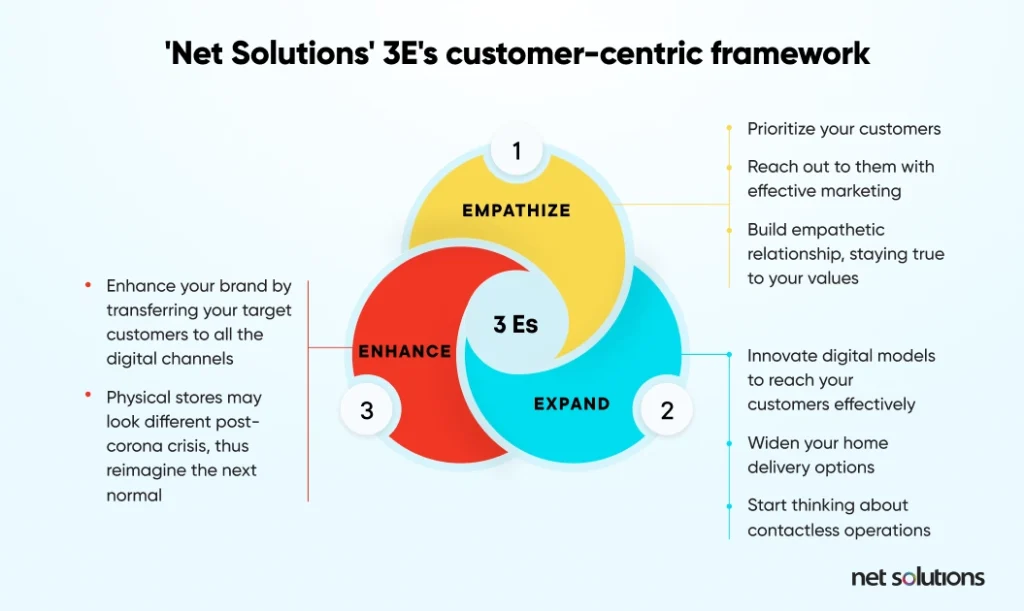
What is multichannel retailing?
Multichannel retail is product-centric and allows consumers to engage around your products and let them make purchases from all the available channels; however, these channels are not integrated, thereby acting as separate purchase opportunities.
Multichannel retail experience= Multiple channels + Separate channels
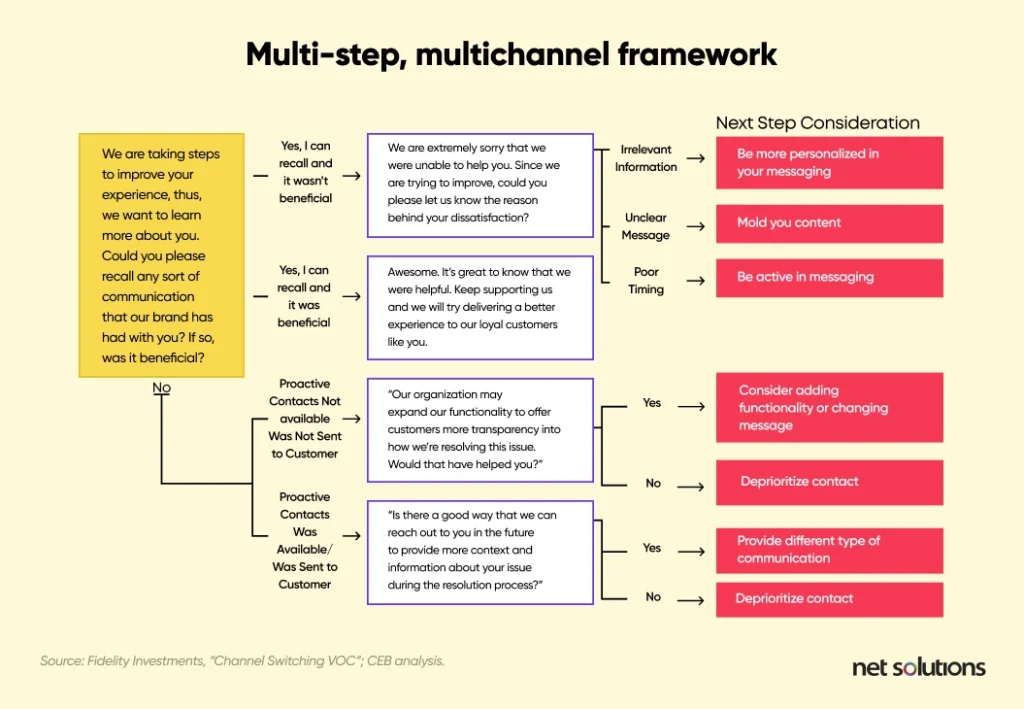
Omnichannel vs. Multichannel retail – What is the difference?
Let’s say you have multiple channels for customer interactions, i.e., email, website, mobile app, social media presence, and even the brick-and-mortar setup. Let us understand the two scenarios that help us draw a line between omnichannel vs. multichannel customer experience in retail.
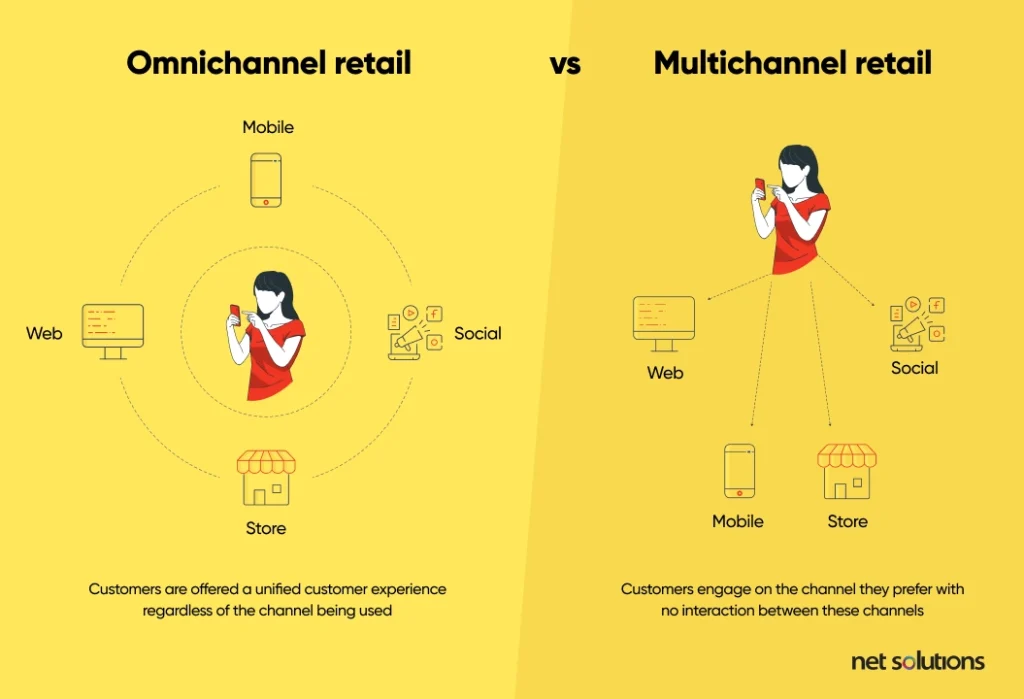
While omnichannel vs. multichannel retail has differences, it’s challenging to visualize them. Let’s have a look at a multichannel vs. omnichannel example to get a better understanding.
Omnichannel retail example
Referring to the same analogy, let’s talk about the after-purchase experience of Mark. Now he wishes to buy a few accessories for his laptop. He revisits the website, and to his surprise, he is welcomed with spot-on recommendations for the accessories without even having to look for them. Also, his social media feeds showcase carousel ads for the recommended products.
When he adds the accessories to the cart, the coupon code he received via email gets automatically applied. Mark also gets a suggestion to visit his nearest store for a tangible customer service experience. This is how we define the customer experience in omnichannel retail. Here all the channels involved are freely flowing data rivers that communicate effortlessly to offer to keep a customer in the loop.
Challenges with omnichannel retail experience
Although businesses incorporate various strategies to deliver a seamless omnichannel experience to their customers, they can still not bring them back to their buying journey.
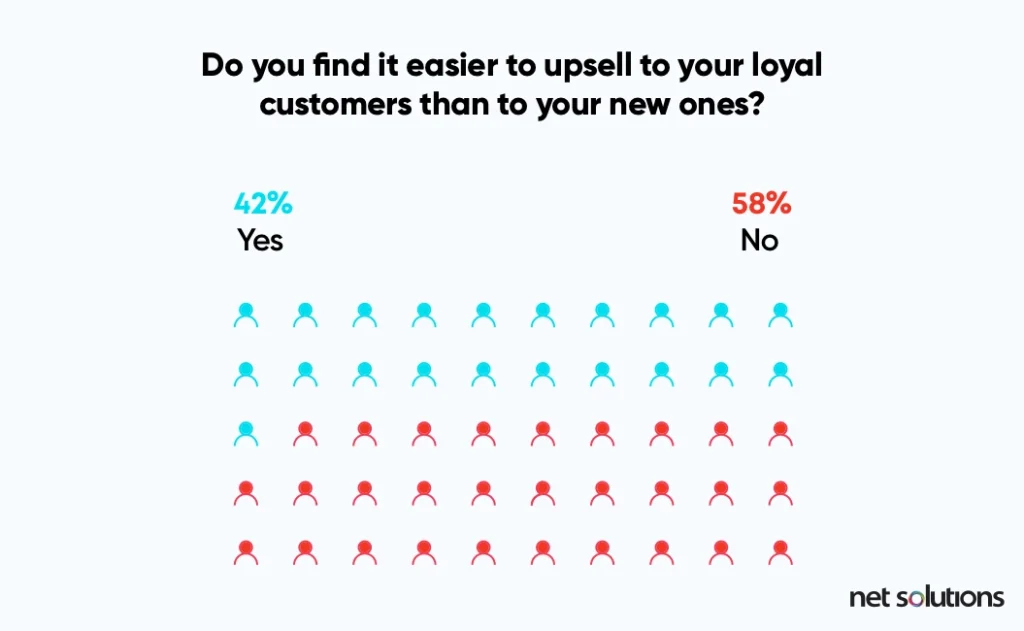
It could be because of one of the following challenges:
a) Message Frequency Challenge
The high stakes of a customer not noticing a personalized message. You may bombard their mails or push notifications, but in the end, they might get frustrated. And, with the customers losing interest, there is nothing much you can do.
b) Privacy Wars
A problem with iOS users — Apple’s privacy protocols do not allow much data transparency. That makes it tricky to track customers across touchpoints. And then, there is Intelligent Tracking Prevention (ITP), which adds to the challenges further by introducing stringent protocols.
c) Effective asset sharing across the organization
Accessing large volumes of assets has never been easy. Creative and marketing teams often store the assets in multiple locations leading to duplication of assets and insufficient use of resources and workflows, which leads to high costs for the company.
Multichannel retail example
Mark is a customer who wishes to purchase a new laptop at the consideration stage. He does a few searches across the web and lands on your website but, for some reason, does not complete the purchase.
Later, he decides to complete the purchase from his mobile app; however, there is no record of Mark’s website activity once he accesses the app to buy the laptop. Mark goes through the entire buying journey again: select the laptop and make a purchase.
So, in this buying journey, different channels – website and mobile app – compete, and Mark has to choose between the two channels to complete his purchase. This is how we define multichannel customer experience in retail.
There are different challenges for the multichannel strategy, which we have discussed in the following section:
Challenges with multichannel retail experience
No matter how interactive or responsive your touchpoints are; they will fail if they are not interconnected.
You cannot leave the context of your customers. To move one step forward, you need to see: What stops you from offering the right multichannel customer experience? Like, it could be one of the following:
a) Breaking Down the Siloed Structures
Different teams are spread across the organization with different goals and objectives to cover at the end of the day. Where one team might be handling the email conversations, one might be concerned with social media, and the other might be concerned with website communications. The problem is the missing shareability here. Everyone’s been working in silos — the-upshot — fractured experiences across touchpoints.
b) Rich online experience as a Physical Store
Customers expect a superb online experience that mirrors what they encounter in physical stores. They want to have a dynamic view of their potential purchases. They would like to click on any product and check the product in different colors, fabrics, 360-degree views, etc.
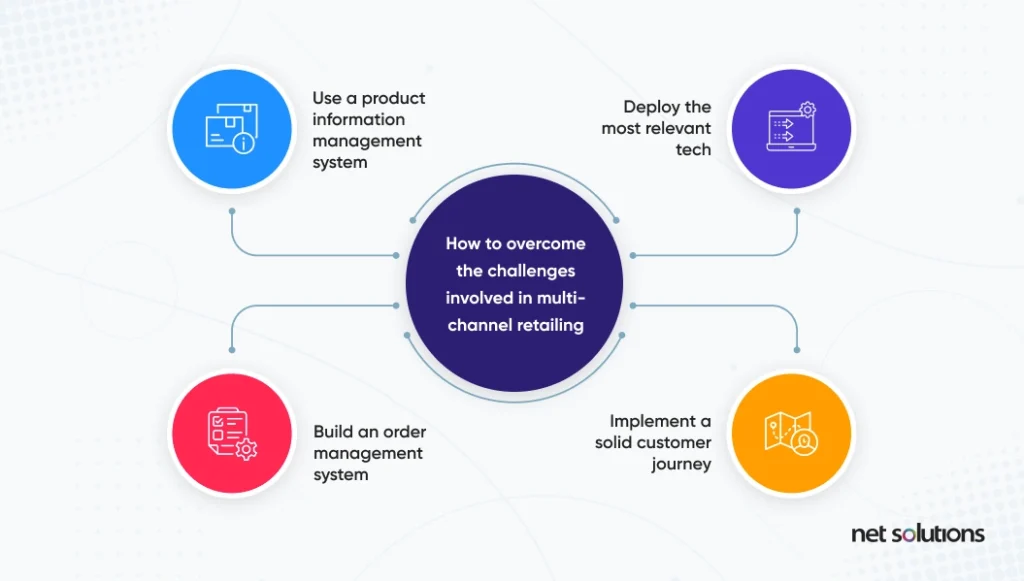
Why is an omnichannel retail experience important for your business?
Omnichannel customers loved using the retailer’s touchpoints in all sorts of combinations and places. Not only did they use smartphone apps to compare prices or download a coupon, but they were also avid users of in-store digital tools such as an interactive catalog, a price-checker, or a tablet.
Customers preferred an integrated omnichannel experience over having multiple channels and points of contact. Making the transition from channel to channel more seamless has the potential to help you retain the majority of your customers. They want a quick and easy retail experience no matter where they are and to buy at any point in their journey, from social media to search and everywhere in between.
Some of the major advantages include –
- Give your business a boost in sales.
- It improves inventory management and makes it easier to optimize stock levels.
- Produces a consistent brand experience.
- It lets you achieve a competitive advantage over competitors.
- Improved customer experience.
- Offering Customers Personalized experience.
Businesses can gain an advantage over their competitors while saving time and money by capitalizing on existing markets and successful companies. A comprehensive omnichannel strategy can be divided into marketplaces, social platforms, and search engines.
You’ve probably heard of Amazon, the world’s largest digital marketplace. Other major marketplaces are eBay, Walmart Marketplace, Wish, and Mercado Libre. Some marketplaces cater to specific geographic regions, whereas others allow vendors to sell their goods globally. Which marketplaces you choose to sell on, however, is determined by your company’s capabilities and customer base.
Businesses can use social media to connect entire ecommerce inventories to their social media accounts, allowing followers to purchase directly from their social profiles. Social media was once the backbone of any digital marketing campaign. Businesses can now actively advertise and sell products directly on their social media channels, thanks to the evolution of consumer expectations and the development of more robust tools.
Any marketing campaign strategy should include search engine marketing. As search engine algorithms and data capture have improved, search engines such as Google and Bing have begun to offer shoppers the ability to purchase products on their platforms.
While shop and inventory integrations are essential for an omnichannel search strategy, the old standbys remain relevant. Organic search engine optimization, combined with a strong advertising and keyword campaign, can help increase a product’s visibility and awareness. These marketing tools are an important component of an omnichannel search strategy and should be noticed.
Why is a multichannel retail experience important for your business?
In 2020, multichannel online retailers generated more than 350 billion U.S. dollars in e-commerce sales in the United States. The figure is expected to exceed 575 billion in 2023.
– Statista
By giving customers more options for purchasing, you open yourself up to more possibilities while offering your customers even more flexibility. A single-channel seller may suffer if one business dominates the other, but multichannel sellers have more leeway comparatively.
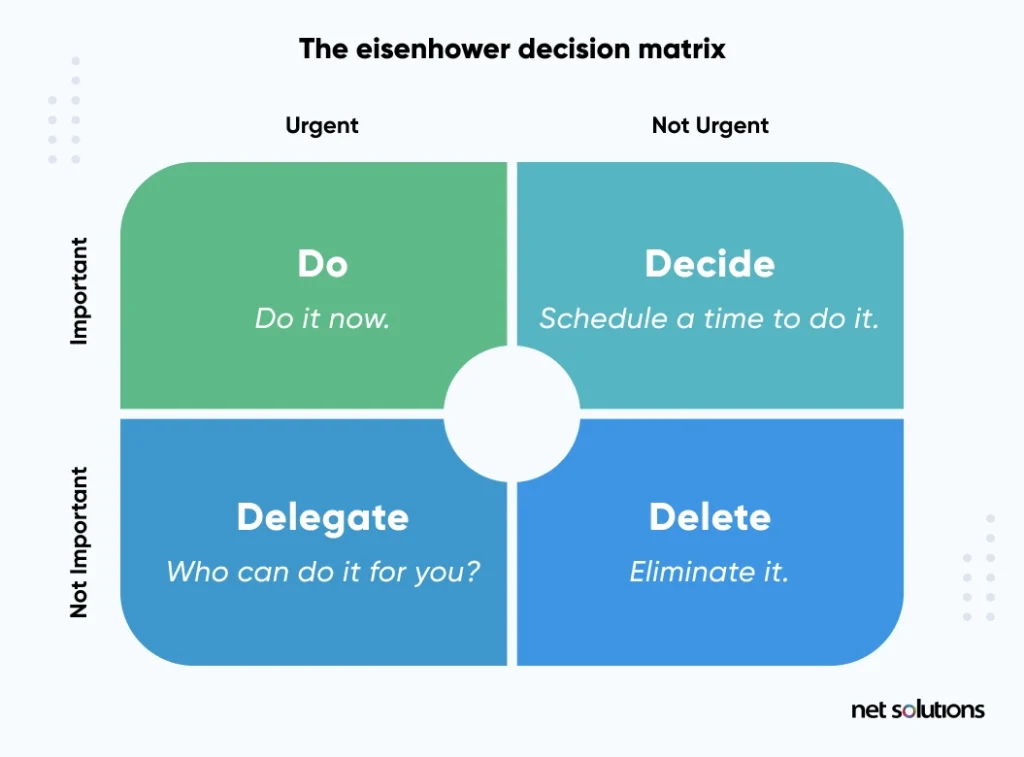
Choosing between omnichannel vs. multichannel retail
Customers buy based on their experience with your brand. In today’s dynamic eCommerce solutions, where brands and marketplaces are racing to grab consumer attention, building brand loyalty and making the brand stand out is a persistent theme with eCommerce players.
Considering this, an omnichannel eCommerce strategy that offers an integrated and seamless user experience seems to be a better and more logical choice.
An ideal advice for an eCommerce retail startup is, to begin with, the multichannel retail strategy and gradually move towards omnichannel retailing with the following points in mind:

1. Maintain limited channels to reduce clutter
There are numerous channels for engaging a customer through digital commerce — website, app, email, social media, AdWords, newsletters, etc. The number of channels across the web will never stop adding. And, if you think of going all-inclusive, chances are you’ll be losing out on revenues.
2. Show consistency around design patterns
When a consumer interacts with the customer channel, its visual design is the first thing that catches their attention. Whether it is a brick-and-mortar setup or a cashier-less store layout like Amazon Go, this design represents your brand’s personality. So, it needs to reflect a certain consistency throughout the platform.
3. Incorporate cross-channel analytics
When meeting your customers’ expectations, guesswork is ineffective. It would be beneficial to calculate it using data-driven statistics that are error-free. To make tracking easier, this is achievable with CRM (Customer Relationship Management Systems) or even DXPs (Digital Experience Platforms).
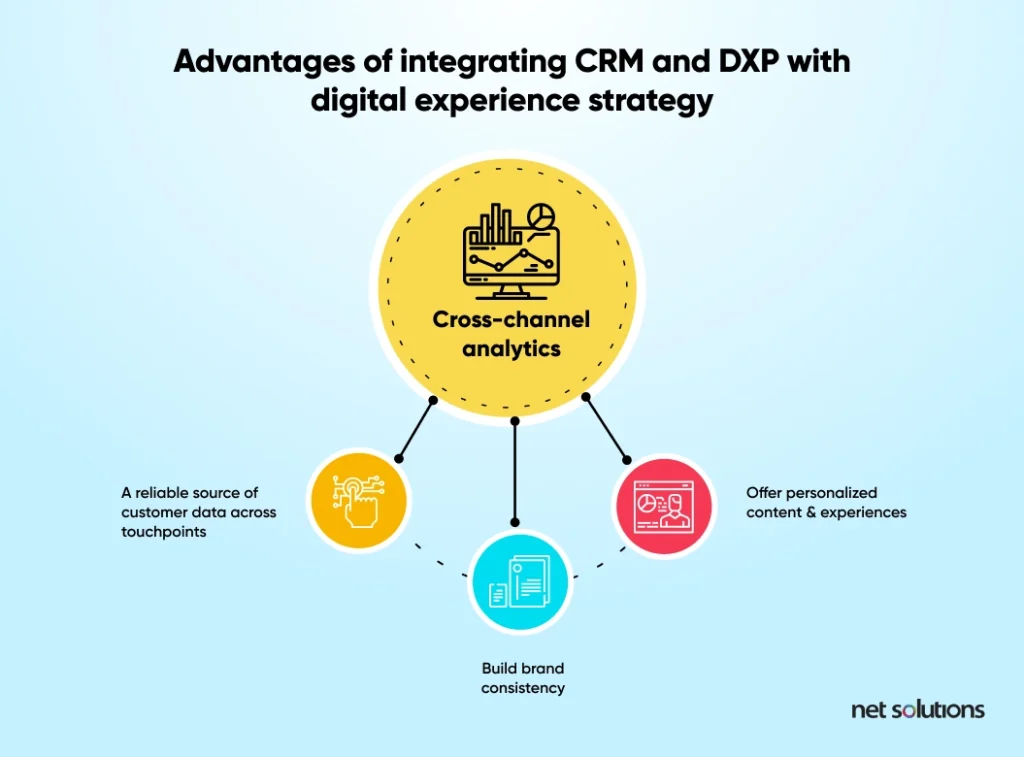
Frequently Asked Questions
1. Is Amazon an omnichannel or multichannel?
Amazon follows an omnichannel approach. Amazon’s omnichannel retail experiences are critical to retaining customers and regaining previously lost sales
2. How to pick between an omnichannel and multichannel strategy?
The major deciding factor lies in your marketing strategy. Omnichannel refers to using all available media channels centered on the customer. In contrast, multichannel refers to using more than one channel centered on the product or service. Make sure you have a clear understanding of your business and marketing approaches before coming to a decision.
3. What is the difference between multi-channel, cross-channel and omnichannel?
Multichannel – Users can communicate and purchase from a company via various channels, but the channels are independent and completely disconnected. Cross-channel – Cross-channel marketing is similar to multichannel marketing with one significant difference: cross-channel connects the various communication channels. Omnichannel – Omni-channel uses multiple channels that communicate with each other and work seamlessly together and frequently simultaneously to provide customers with a comprehensive experience across all channels.
4. How can we avoid multi-channel conflict?
Multichannel conflict is when two or more channels of the same business compete in the same market and sell the same product at special prices. How can you avoid it – Set a minimum advertised price. Reduce the number of distribution channels. Maintain control over your supply chain. Enhance your brand by providing exclusive products.
SHARE THIS POST
Table of Contents
Related Resources
- eCommerce App Development Cost: Budgeting In-Depth Guide
- 13 Differences Between B2B and B2C eCommerce Websites
- Top 10 eCommerce Challenges and Easy Ways to Overcome Them
- 3 Types of eCommerce Business Models That Work in 2024
- eCommerce for Business: Is eCommerce Applicable for All Business Types
- eCommerce Customer Journey Mapping - The Secret to Higher Conversion Rates
- What is Headless Commerce? The Ultimate Guide
- Top 15 eCommerce KPIs to Track the Performance of Your Online Business
- Why Your Business Needs a Mobile eCommerce App
- Omnichannel Retail Strategy: A Comprehensive Guide
- What is eCommerce Order Fulfilment? (And 6 Steps to Improve the Process)
- PCI Compliance: Everything You Need To Know
- The BEST Guide to eCommerce Personalization
- 12 Essential Factors for Choosing the Best eCommerce Platform
- The Ultimate Guide to Product Information Management (PIM) Systems for Ecommerce
- What is a Product Recommendation Engine (And How it Helps Boost Sales)
- eCommerce Replatforming: Challenges, Benefits, and Best Practices
- The Ultimate Guide to eCommerce Security
- Top 13 eCommerce Trends in 2024
- How Voice Search will Transform the Future of eCommerce
- What is Web Accessibility (And Why it Matters for Your eCommerce Business)



